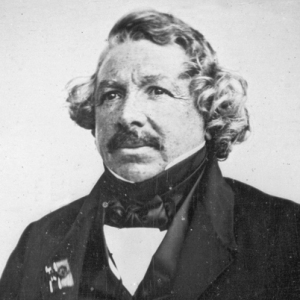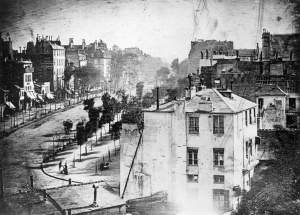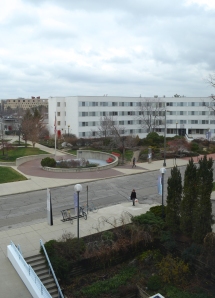Louis Daguerre was first known as a Romantic painter, print maker, and physicist before he invented the daguerreotype, an early invention of the camera, in 1839. Daguerre had been working very hard to find a way to capture quickly fading images that he saw in his camera obscura (Daniel). He went through many trials and errors doing the best he could to figure how to produce an image and preserve it to view later. Dr. Rebecca Jeffrey Easby explains his process, “His technique consisted of exposing a copper plate coated in silver and sensitized with iodine to light in a camera and then developed it in darkness by holding over a pan of heated vaporizing mercury.” This process that Daguerre created allowed for a shorter developing time than ever before. Shortening the process time made his invention, the daguerreotype, more appealing to others.
In Paris Boulevard, we are able to see Daguerre’s process that captures more detail than ever before (Easby). Even though this is true, the processing time was still lengthy. In order to capture any people in a photograph, those people would have to stay still for 10 to 15 minutes at a time (Easby). This is why we see very few people within this image. The one person that Daguerre was able to capture was a man getting his shoes shined who soon turned into possibly the first person to ever be photographed (Easby). I am sure that this man was not aware that his picture was being taken or that he would be in such a famous photo. In this early photograph, we are also able to observe the angle at which Daguerre was at in order to capture this image. Positioning himself high up at a birds eye view, he was able to capture an image of Paris that not many people are able to view. This is because whenever artists, particularly painters, would capture a landscape, they did not have access to such high heights for long periods of time. It was much easier for them to work from the ground where they were familiar. This all began to change once Daguerre snapped famous photo. Daguerre had now changed artists point of view in which they viewed the world. This process of capturing a scene realistically with a daguerreotype inspired painters to break away from painting these scenes just as they saw them. Now that they had a form of a camera that could capture these scenes within minutes, why did they need to keep painting them? This is what initially brought upon the Impressionists period of painters. The impressionists were now able to express more of what a scene made them feel rather than what every little detail looked like.
After learning about Louis Daguerre and his first experience with photography, I decided to take some photos that represented his early work that lead to Impressionism. I wanted to be high up where I was able to have a birds eye view like in his photo, Paris Boulevard. Although this angle at which my photo was taken is not new to the world, it was somewhat new to me. As a photographer myself, I generally enjoy taking close ups in order to capture as much detail as possible. I have taken photos from this angle before but I am usually closer to my subject. Also, I was able to snap this photo rather quickly compared to how long it took Daguerre. That is why I decided to take my time and capture many photos until I found the right one. My process was still much simpler than Daguerre’s but I feel as if taking more time than usual offered me time to really think about where I placed my lens. Overall, I was pleased to learn about the process Daguerre went through to get a single photo and compare it to our quicker process we use today.
Works Cited
Jeffrey Easby, Rebecca, Dr. “Daguerre’s Paris Boulevard.” Louis Daguerre, Parisian Boulevard. N.p., n.d. Web. 9 Dec. 2012.



